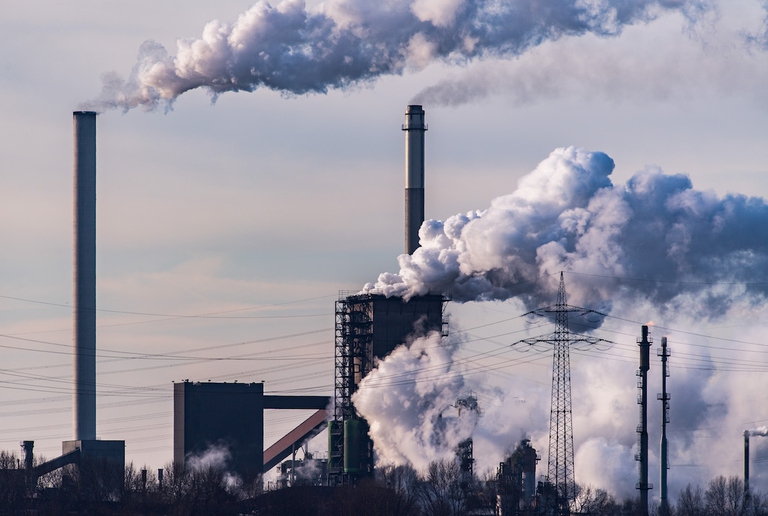
A group of experts in Tokyo suggested pouring radioactive water from Fukushima into the open sea. A marine biochemist explains the consequences of this absurd decision.
Scientists from Harvard University in the United States are launching the biggest solar geoengineering programme to date, with a view to study the effects of this technology as a potential fix for global warming. The project due to take off in a few weeks consists of spraying sulphate aerosols about 20 kilometres in height into the Earth’s stratosphere.
Scientists from Harvard University in the United States are launching the biggest solar geoengineering programme to date, with a view to study the effects of this technology as a potential fix for global warming. The project due to take off in a few weeks consists of spraying sulphate aerosols about 20 kilometres in height into the Earth’s stratosphere. These tests are aimed at establishing if solar geoengineering can mimic what happens in a volcanic eruption, in which the reflective particles that are released deflect sunlight away from the Earth and reduce average global temperatures.
Advocates of this technology suggest that if tests are successful solar geoengineering could help fight the effects of global warming, cooling the atmosphere and returning us to preindustrial temperatures.
Read more: 2016 was the hottest year on record, according to NASA and NOAA
Harvard scientists don’t envisage this tool as a substitute for cutting emissions but as a supplement to ongoing efforts. However, peers warn that solar geoengineering may lead to an even more sluggish attitude to climate action and risk redirecting funds from proven mitigation technologies like solar or wind energy to finance a quick fix that could have significant drawbacks.
In fact, lowering the planet’s temperature with this technology would be relatively cheap, costing less than 10 billion dollars per year, but issues of governance and ethics may arise “when every country and/or adventurous billionaire gains access to the world’s thermostat,” writes Andrew Snyder-Beattie, director of research at Oxford University’s Future of Humanity Institute on the Guardian.
Aiming to simply reflect sunlight without reducing or removing greenhouse gases from the atmosphere, solar geoengineering doesn’t address the root causes of climate change nor does it halt other problems related to carbon emissions such as ocean acidification.
Furthermore, scientists warn of other unforeseen and potentially disastrous effects. “Cutting incoming solar radiation affects the weather and hydrological cycle. It promotes drought. It destabilises things and could cause wars,” says Kevin Trenberth at the UN’s Intergovernmental Panel on Climate Change.
Whilst acknowledging the risks and advocating caution due to lack of evidence currently available on the effects of this technology the scholars behind the project argue that neglecting research may in the future prove fatal should a time come when an extreme measure is the only remaining option to avoid climate change from changing the world as we know it, forever and for the worse.
Siamo anche su WhatsApp. Segui il canale ufficiale LifeGate per restare aggiornata, aggiornato sulle ultime notizie e sulle nostre attività.
![]()
Quest'opera è distribuita con Licenza Creative Commons Attribuzione - Non commerciale - Non opere derivate 4.0 Internazionale.
A group of experts in Tokyo suggested pouring radioactive water from Fukushima into the open sea. A marine biochemist explains the consequences of this absurd decision.
The decline in grey and humpback whales in the Pacific and Atlantic Oceans has been traced to food shortages caused by rising ocean temperatures.
The United Nations has launched a major international alliance for ocean science, undertaking a mission close to all our hearts.
The cargo ship that ran aground off the coast of Mauritius on 25 July, causing incalculable damage, has split in two and its captain has been arrested.
The largest coral reef in the world is severely threatened by climate change, but researchers are developing strategies that could contribute to saving the Great Barrier Reef.
Seychelles have extended its marine protected area, which now covers over 400,000 square kilometres, an area larger than Germany.
Norwegian oil giant Equinor had pulled out of drilling for oil in the Great Australian Bight, one of the country’s most uncontaminated areas. A victory for activists and surfers who are now campaigning for the area to be protected forever.
30 per cent of the planet needs to be protected to stop precipitous species decline. The UN has set out its aims for the the COP15 on biodiversity scheduled for Kunming, China in October.
Ocean warming has risen to record highs over the last five years: just in 2019 the heat released into the world’s oceans was equivalent to that of 5-6 atomic bombs per second. The culprit, no doubt, is climate change.








